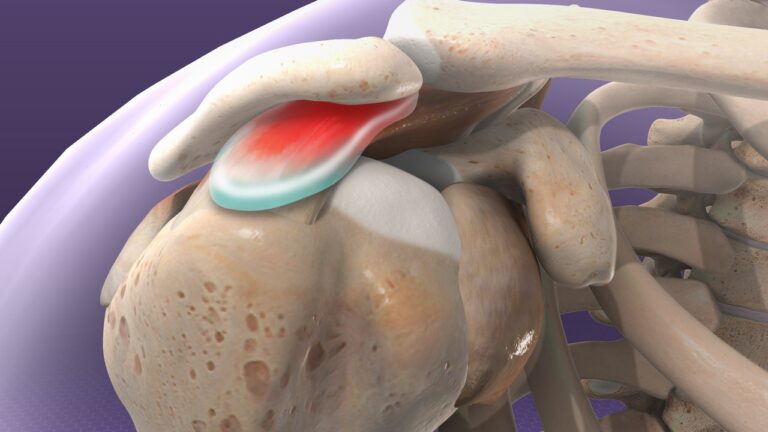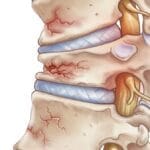Introduction to Impingement Syndrome
Impingement syndrome, also referred to as shoulder impingement, occurs when the tendons of the rotator cuff and the subacromial bursa are compressed during shoulder movements. This compression leads to inflammation, pain, and reduced mobility. The condition is common among individuals who engage in repetitive overhead activities, such as athletes and manual laborers.
Anatomy of the Shoulder
Key Shoulder Structures
The shoulder consists of three main bones:
- Scapula (shoulder blade): Forms the back structure of the shoulder.
- Humerus (upper arm bone): Connects the shoulder to the arm.
- Clavicle (collarbone): Links the shoulder to the chest.
The acromion, a bony projection of the scapula, forms the roof over the rotator cuff tendons and the subacromial bursa, a fluid-filled sac that minimizes friction. In a healthy shoulder, there is sufficient space for smooth movement between these structures.
Causes of Impingement Syndrome
Impingement syndrome results from narrowing of the space between the acromion and the rotator cuff tendons. This compression can occur due to:
- Bone Spurs
- Age-related bony growths under the acromion can decrease the space for tendons.
- Acromion Shape
- Variations in the anatomy of the acromion, such as a downward curve, increase the risk of impingement.
- Overuse
- Repetitive overhead activities, such as swimming or heavy lifting, strain the rotator cuff tendons and the bursa.
- Injury
- Shoulder injuries can cause swelling and inflammation, further narrowing the subacromial space.
Symptoms of Impingement Syndrome
Recognizing symptoms early is essential for effective treatment. Common symptoms include:
- Shoulder Pain: A dull ache, often worsening with overhead movements.
- Weakness: Reduced strength in the shoulder, particularly when lifting or reaching.
- Limited Mobility: Difficulty moving the arm, especially during activities like reaching behind the back.
- Night Pain: Discomfort that interrupts sleep, particularly when lying on the affected shoulder.
Without treatment, symptoms can progress, leading to chronic pain and significant impairment in daily activities.
Diagnosis of Impingement Syndrome
To diagnose impingement syndrome, healthcare providers use a combination of:
- Medical History:
- Questions about symptoms, activity levels, and any history of shoulder injuries.
- Physical Examination:
- Assessing range of motion, strength, and specific tests to provoke impingement-related pain.
- Imaging Tests:
- X-rays: Detect bone spurs and acromion abnormalities.
- MRI or Ultrasound: Evaluate the rotator cuff tendons and identify inflammation or tears.
Treatment Options for Impingement Syndrome
Nonsurgical Treatments
- Rest and Activity Modification:
- Avoid activities that worsen symptoms.
- Ice Therapy:
- Reduces pain and inflammation.
- Medications:
- Nonsteroidal anti-inflammatory drugs (NSAIDs) to manage swelling and pain.
- Physical Therapy:
- Aims to restore shoulder mechanics with stretching, strengthening, and posture correction exercises.
- Corticosteroid Injections:
- Reduces severe inflammation for short-term relief.
Surgical Intervention
If conservative treatments fail, surgical options include:
- Arthroscopic Subacromial Decompression:
- A minimally invasive procedure to remove bone spurs and increase the space for rotator cuff tendons.
- Open Surgery:
- Reserved for complex cases requiring extensive repair of the rotator cuff or surrounding structures.
Rehabilitation After Treatment
Nonsurgical Rehabilitation
- Focus on improving flexibility, strength, and posture to prevent recurrence.
Post-Surgical Rehabilitation
- Gradual return to activity with a physical therapy program.
- Early emphasis on pain management and range-of-motion exercises, progressing to strengthening exercises.
Conclusion
Impingement syndrome is a common shoulder condition that can significantly impact daily activities if left untreated. Early diagnosis and appropriate treatment—whether nonsurgical or surgical—can relieve pain, restore mobility, and prevent further complications.





